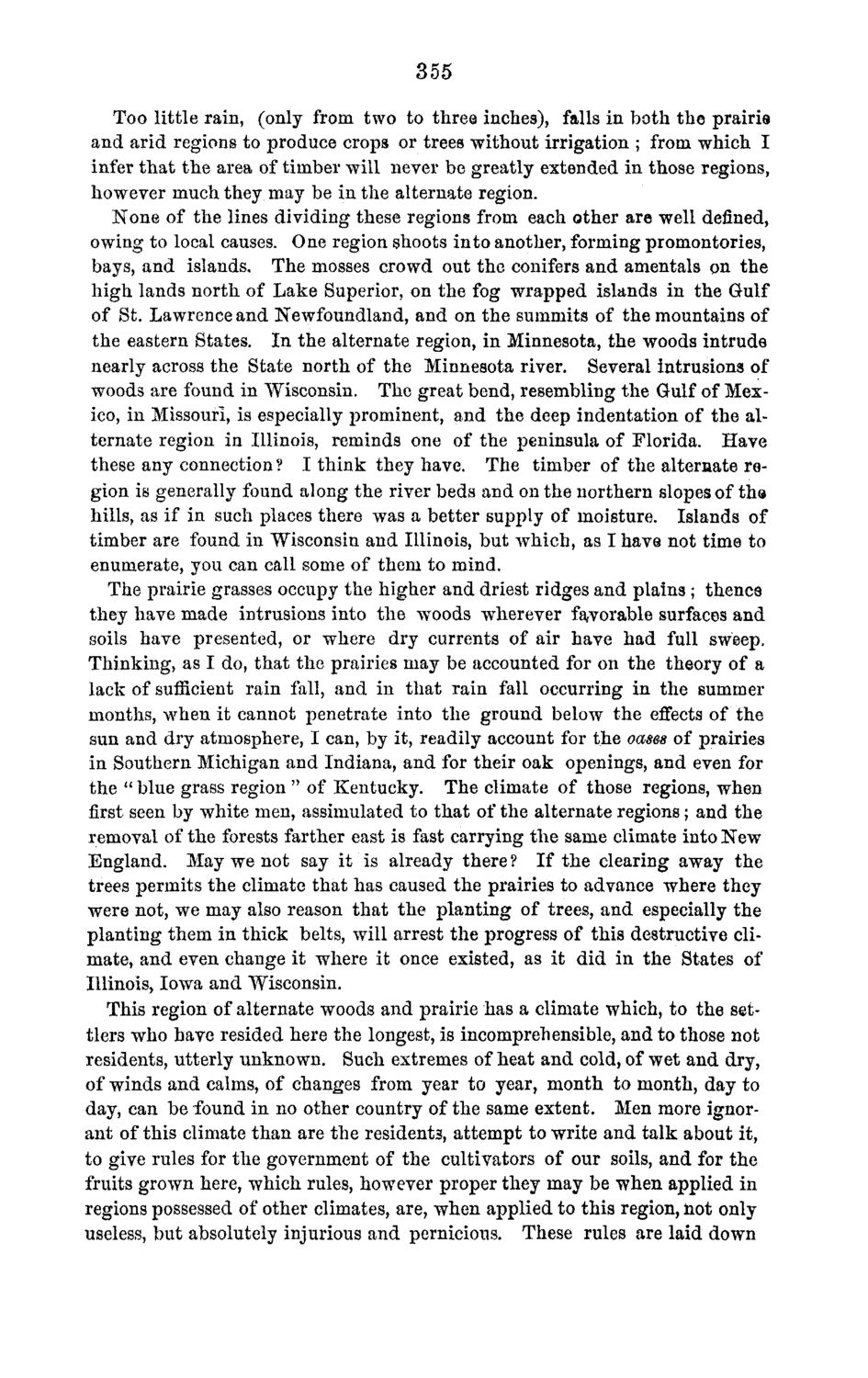| |
| |
Caption: Board of Trustees Minutes - 1870
This is a reduced-resolution page image for fast online browsing.

EXTRACTED TEXT FROM PAGE:
355 Too little rain, (only from two to three inches), falls in both the prairie and arid regions to produce crops or trees without irrigation ; from which I infer that the area of timber will never be greatly extended in those regions, however much they may be in the alternate region. None of the lines dividing these regions from each other are well defined, owing to local causes. One region shoots into another, forming promontories, bays, and islands. The mosses crowd out the conifers and amentals on the high lands north of Lake Superior, on the fog wrapped islands in the Gulf of St. Lawrence and Newfoundland, and on the summits of the mountains of the eastern States. In the alternate region, in Minnesota, the woods intrude nearly across the State north of the Minnesota river. Several intrusions of woods are found in Wisconsin. The great bend, resembling the Gulf of Mexico, in Missouri, is especially prominent, and the deep indentation of the alternate region in Illinois, reminds one of the peninsula of Florida. Have these any connection ? I think they have. The timber of the alternate region is generally found along the river beds and on the northern slopes of the hills, as if in such places there was a better supply of moisture. Islands of timber are found in Wisconsin and Illinois, but which, as I have not time to enumerate, you can call some of them to mind. The prairie grasses occupy the higher and driest ridges and plains; thence they have made intrusions into the wToods wherever favorable surfaces and soils have presented, or where dry currents of air have had full sweep. Thinking, as I do, that the prairies may be accounted for on the theory of a lack of sufiicient rain fall, and in that rain fall occurring in the summer months, when it cannot penetrate into the ground below the effects of the sun and dry atmosphere, I can, by it, readily account for the oases of prairies in Southern Michigan and Indiana, and for their oak openings, and even for the " blue grass region " of Kentucky. The climate of those regions, when first seen by white men, assimulated to that of the alternate regions; and the removal of the forests farther east is fast carrying the same climate into New England. May we not say it is already there ? If the clearing away the trees permits the climate that has caused the prairies to advance where they were not, we may also reason that the planting of trees, and especially the planting them in thick belts, will arrest the progress of this destructive climate, and even change it where it once existed, as it did in the States of Illinois, Iowa and Wisconsin. This region of alternate woods and prairie has a climate which, to the settlers who have resided here the longest, is incomprehensible, and to those not residents, utterly unknown. Such extremes of heat and cold, of wet and dry, of winds and calms, of changes from year to year, month to month, day to day, can be found in no other country of the same extent. Men more ignorant of this climate than are the residents, attempt to write and talk about it, to give rules for the government of the cultivators of our soils, and for the fruits grown here, which rules, however proper they may be when applied in regions possessed of other climates, are, when applied to this region, not only useless, but absolutely injurious and pernicious. These rules are laid down
| |